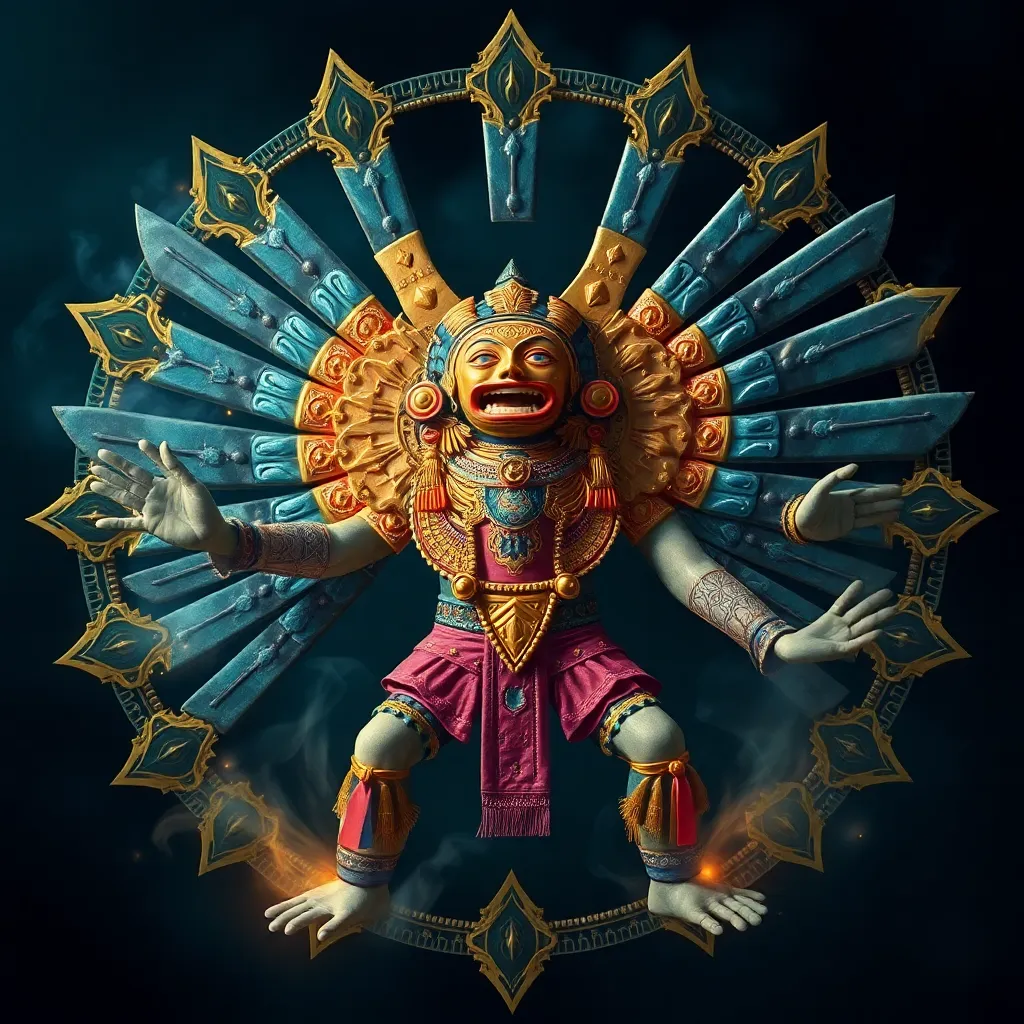The Ahuizotl in Contemporary Art: A Modern Reimagination of the Myth
I. Introduction
The Ahuizotl, a creature steeped in Mesoamerican folklore, particularly within Aztec mythology, captivates the imagination with its unique blend of terror and beauty. This mythological being is often described as a dog-like creature with a hand at the end of its tail, reputed to lure unsuspecting victims to watery graves. Its significance extends beyond ancient narratives, echoing through contemporary culture in various artistic expressions.
This article aims to explore the reinterpretation of the Ahuizotl in modern art, examining how contemporary artists draw from this rich mythological background to comment on societal issues, cultural identity, and the relationship between humanity and nature.
II. Historical Context of the Ahuizotl Myth
The origins of the Ahuizotl can be traced back to Aztec mythology, where it was feared as a malevolent creature inhabiting bodies of water. Descriptions often depict it as resembling a dog, complete with a long tail that ends in a human-like hand, which it uses to pull its victims into the depths.
In ancient narratives, the Ahuizotl played a crucial role in cautionary tales and was often associated with rituals aimed at appeasing water deities. Its presence in these stories served to underline the importance of respecting nature’s power and the dangers that lurked within it.
Over time, the myth of the Ahuizotl has evolved, absorbing various cultural influences and adapting to the changing landscape of Mesoamerican societies. Today, it stands as a potent symbol of both fear and reverence in contemporary art.
III. The Ahuizotl as a Symbol in Contemporary Art
In contemporary art, the Ahuizotl has emerged as a multifaceted symbol, representing a wide range of themes. Artists utilize this myth to explore:
- Nature: The relationship between humanity and the natural world, often highlighting environmental concerns.
- Water: The duality of water as a source of life and a potential harbinger of death.
- The Supernatural: The intersection of folklore and modern existential fears.
Furthermore, the Ahuizotl serves as a metaphor for contemporary societal issues, including:
- Colonialism: Reflecting on the impact of colonization on indigenous cultures.
- Identity: Exploring themes of belonging and cultural heritage.
- Environmentalism: Addressing the consequences of environmental neglect.
IV. Case Studies: Notable Artists and Works
Several artists have notably reimagined the Ahuizotl, each bringing their unique perspective to this ancient myth. Some prominent figures include:
- Yoshua Okón: Known for his provocative video installations that explore themes of identity and myth.
- Teresa Margolles: Her work often addresses violence and death, drawing connections to the Ahuizotl’s lethal reputation.
- Osvaldo Ybarra: Focuses on the interplay between ancient myths and contemporary issues through mixed media.
Significant artworks featuring the Ahuizotl often invite viewers to confront uncomfortable truths about culture and existence. These pieces resonate deeply with audiences, prompting discussions about heritage, environmental issues, and the ongoing relevance of myth in modern life.
V. The Influence of Technology on Ahuizotl Representations
The advent of digital technology has transformed how the Ahuizotl is represented in contemporary art. Key developments include:
- Digital Art: Artists are utilizing digital mediums to create vibrant, imaginative representations of the Ahuizotl, allowing for intricate details and new interpretations.
- Social Media: Platforms like Instagram and TikTok serve as vital spaces for artists to share Ahuizotl-themed artwork, reaching wider audiences and fostering community engagement.
- Virtual Reality: Immersive experiences allow audiences to engage with the Ahuizotl myth in a dynamic way, creating interactive narratives that enhance understanding and appreciation.
VI. Cultural Reclamation and Identity
The representation of the Ahuizotl in contemporary art raises important questions about cultural appropriation versus appreciation. Artists of Indigenous descent are increasingly reclaiming this myth, using it as a powerful vehicle to explore their identity and heritage. This reclamation involves:
- Celebrating Indigenous Narratives: Reinterpreting the Ahuizotl within the context of their cultural significance.
- Challenging Misrepresentations: Addressing stereotypes and misconceptions about Indigenous cultures.
- Fostering Dialogue: Encouraging conversations about heritage, identity, and the impact of colonialism.
As a result, the Ahuizotl becomes not just a symbol of fear, but a complex representation of resilience and cultural pride.
VII. The Ahuizotl in Performance Art and Installations
Performance art has also embraced the Ahuizotl, with artists creating pieces that invite dynamic engagement with the myth. Examples include:
- Interactive Installations: Spaces that allow audiences to explore the myth through sensory experiences, incorporating sound, visuals, and tactile elements.
- Storytelling Performances: Artists narrating the Ahuizotl’s tale in immersive formats, encouraging audience participation and emotional connection.
- Multimedia Works: Combining visual art, dance, and spoken word to create powerful narratives centered on the Ahuizotl.
The narrative power of performance art effectively conveys the Ahuizotl story, bridging the gap between ancient myths and contemporary experiences.
VIII. Conclusion
The Ahuizotl’s impact on contemporary art is profound, serving as a catalyst for exploring themes of identity, nature, and societal issues. Its representation in modern artistic expression underscores the ongoing relevance of myth in shaping cultural narratives and fostering dialogue.
As artists continue to reinterpret this ancient myth, the Ahuizotl will undoubtedly remain a significant figure in the landscape of contemporary art, reminding us of the power of storytelling and the enduring connection between past and present.



